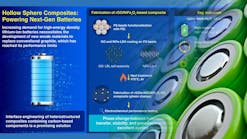Ambient light sensors (ALSs) are photodetectors that approximate the human eye’s response to light intensity under a variety of lighting conditions and through different attenuation materials. They’re most commonly found in industrial lighting, consumer electronics, and automotive systems. But they have seen increased usage in LCD-equipped portable products—especially smartphones—because an ALS IC can automatically control the brightness level of the display backlight.
Aside from improving visibility, they help reduce power consumption. LCD backlighting can draw as much as 51% of the power in the input standby mode. One of the main challenges now is selecting an ALS for LCD products with the ability to detect wavelengths visible to the human eye (400-700 nm). There are many types of ALSs; some technologies have been around for decades while others are still maturing.
Types of Ambient Light Sensors
Ambient-light-sensor technologies include photoresistors, photodiodes, phototransistors, and ALS ICs:
Photoresistors: Both a passive electronic component and the simplest optical sensor, the photoresistor has a resistance that varies depending on the light intensity. It also can respond in a way that’s similar to the human eye. In darkness, the resistance is very high (e.g., 1 MΩ) and in the light, the resistance tends to fall down (e.g., 10-20 kΩ at 10 lux). Cadmium-sulfide (CdS) photoresistors (Fig. 1) were very common many years ago, but since 2006, cadmium has been designated as a prohibited RoHS (Restriction of Hazardous Substances) material.








